Recent Advances in Internet of Things (IoT) Infrastructures for Building Energy Systems: A Review †
Abstract
1. Introduction
2. Sensors Characteristics
2.1. Sorts of Sensors
2.2. Powering Sensors
3. Control Methods
3.1. Predictive Methods
3.2. Adaptive Methods
4. Architecture and Networking
5. Case Studies of the IoT Applied to Building Energy Systems
5.1. Energy Consumption Monitoring and Control
5.2. Predictive Temperature Control
5.3. Occupancy and Comfort Sensing
5.4. Controllable Devices
5.5. Smart Home Application
5.6. Examples of Case Studies of the IoT Applied to Building Energy
6. Security
7. IoT Limitations and Challenges
8. Conclusions
- A number of researchers have confirmed the feasibility of applying IoT architectures for the problem of building management. Each of the building processes, such as HVAC, lighting, water circulation, etc., are capable of remote actuation and are shown to realise significant and quantifiable benefits from such IoT solutions.
- Given the sheer volume of sensors that are now dispersed across a building, it is obvious that the powering of sensors is complex. Researchers have explored a number of powering options from more conventional power over ethernet, to extracting renewable energy at a micro-scale. Other researchers have also explored reducing power requirements so traditional, standalone battery sources may become less cumbersome to manage. Through the remote wireless and low power constraints, it is recommended to use sensors with few data processing capabilities; complicated computations and postprocessing might be postponed to controllers with an extra stationary power supply.
- Both predictive and adaptive approached might be required to optimise energy efficiencies. Predictive methods are crucial to get a greater accurate profile of representative energy consumption, while adaptive methods are entailed for edge situations wherein the estimated energy pattern is imprecise within a given boundary.
- The good news is that a number of established communications protocols remain applicable for Building IoT systems (for example, Bluetooth, LoRaWAN (Long-Range long-power Wide Area Network), Wi-Fi, ZigBee or Z-Wave). More recent models have explored tiered architectures so clusters of sensors can use lower bandwidth and lower power to communicate among each other, but connectivity to central gateways would be of a higher bandwidth, from where high bandwidth solutions transmit information to applications in the cloud. Tiered network architectures become especially as Building IoTs find into wide-area solutions such as for Smart Cities.
- It was also shown that there are active challenges being addressed in the IoT community that are hindering the large-scale rollout of these systems. Primarily, the challenge is the security of the data that IoT systems collect and store. The trade-off that needs to be preserved amid private security and system effectiveness is set up based upon every single environment. The risk for harmful security infractions on a residential setting is significant. A very sophisticated security and encryption system can inhibit system effectiveness, as the computing capacities of the majority of small and isolated IoT platforms are in general limited. Newer technologies such as blockchain and machine learning offer significant promise and are also reviewed (along with more traditional security procedures and applications).
- Some of the better known as well as less obvious challenges that IoT systems face were raised. There are, as highlighted through the paper, several technical limitations that Building IoT systems need to overcome. Many deal with known trade-offs of power requirements, stability of connectivity, management of sensor deployments and security/privacy considerations. There are also critical business trade-offs that customers must make. End-to-end proprietary solutions by leading IT companies offer ease of use, rapid installations and access to “best-in-class” analytics. Yet, these benefits do come at a price, as customers lose ownership of their data and potentially face large switching costs in the future.
- There is not necessarily a “best” application for the IoT applied to building energy reduction. This is because each application is custom to building characteristics and location, as well as the goals of the application. For this reason, it is difficult to compare the cost and installation difficulty of an IoT application. However, if price and system complexity are not concerns, then each of the first four application types could be used together to maximise energy savings.
Author Contributions
Funding
Institutional Review Board Statement
Informed Consent Statement
Data Availability Statement
Acknowledgments
Conflicts of Interest
Appendix A. Building Energy IoT Suppliers
| Supplier | Reference | Parent Company | Scope | Tools | Description | Supplier Link |
|---|---|---|---|---|---|---|
| CONTEC | [83] | N/A | Sensors, controllers, Service | Source code, and IoT product supplier | Established IoT company with various applications and products, one of which focused on buildings and offices | https://www.contec.com/solutions/buildings-offices/ (accessed on 16 March 2021) |
| Lantronix | [84] | N/A | Sensors, controllers | Variety of microcontrollers and sensors | IoT product supplier with wide variety of product options | https://www.lantronix.com/ (accessed on 16 March 2021) |
| Particle | [85] | N/A | Sensors, controllers | Limited sensing tools with hardware | IoT hardware and cloud management company | https://www.particle.io/ (accessed on 16 March 2021) |
| SBT Alliance | [86] | N/A | Sensors, controllers, smart devices | lighting devices, sensors, and controllers | 3-company alliance focused on improving energy efficiency largely through smart lighting | https://sbt-alliance.com/ (accessed on 16 March 2021) |
| sense | [87] | N/A | Sensors | Power meter in electrical panel | Smart meter that monitors usage and trends | https://sense.com/product/ (accessed on 16 March 2021) |
| Silicon Labs | [88] | N/A | Sensors, controllers | Microcontrollers, sensors, gateway connections | IoT company, sells products separately or provides solutions, tailored to building efficiency | https://www.silabs.com/ (accessed on 16 March 2021) |
| WebNMS | [89] | N/A | Sensors, service | Power meters, temperature/environment sensors, upload to server | Provides energy usage and temperature sensing inside and out to analyse trends and provide advice | https://www.webnms.com/iot/energy-management.html (accessed on 16 March 2021) |
| Amazon Echo | [90] | Amazon | Controllers | Smart speaker that can control other smart devices | Voice activated smart speaker that can interact with other smart devices | https://www.amazon.com/Amazon-Echo-Bluetooth-Speaker-with-Alexa-Black/dp/B00X4WHP5E (accessed on 16 March 2021) |
| Apple HomePod | [91] | Apple | Controllers | Smart speaker that can control other smart devices | Voice activated smart speaker that can control HomeKit devices | https://www.apple.com/ca/homepod/ (accessed on 16 March 2021) |
| Google Nest | [92] | Controllers | Smart speaker that can control other smart devices | Voice activated smart speaker that can interact with other smart devices | https://store.google.com/ca/product/google_nest_mini (accessed on 16 March 2021) | |
| HomeKit | [93] | Apple | Controllers | App that can control enabled smart devices | Homekit enabled devices can be controlled by apple electronics | https://www.apple.com/ca/ios/home/ (accessed on 16 March 2021) |
| Insight | [94] | Schneider Electric | Controllers | App that can control enabled smart devices | Energy management platform by Schneider Electric, Intended to go with their solar power system | https://solar.schneider-electric.com/product/insight/ (accessed on 16 March 2021) |
| Libelium | [95] | N/A | Controllers | Waspmote controller and gateway connection | IoT product creator, can provide solutions service or products separately | https://www.libelium.com/ (accessed on 16 March 2021) |
| Smart-Things Hub | [96] | Samsung | Controllers | App that can control enabled smart devices | Connects to a variety of smart devices to monitor and control from a smartphone app | https://www.smartthings.com/products/smartthings-hub (accessed on 16 March 2021) |
| Wink | [97] | N/A | Controllers, smart devices | App that can control enabled smart devices | Home monitoring, control and automation from one mobile application | https://www.wink.com/ (accessed on 16 March 2021) |
| GE Current | [98] | General Electric | Smart devices | LED lights, sensors, controls and analytics | Installs LED lights and controls them in a smart way using sensors and analytics | https://www.gecurrent.com/approach (accessed on 16 March 2021) |
| ecobee | [99] | N/A | Smart devices | Smart thermostat | Smart thermostat that senses activity, important rooms, grid demand and cost to optimise efficiency of heating | https://www.ecobee.com/en-ca/smart-thermostats/smart-wifi-thermostat-with-voice-control/ (accessed on 16 March 2021) |
| Lenovo Smart Home | [100] | Lenovo | Smart devices | Specific devices controlled with a smartphone app | A series of devices that can be controlled by smartphone app for convenience and comfort | https://www.lenovo.com/ca/en/smart-home/ (accessed on 16 March 2021) |
| Philips Hue | [101] | Phillips | Smart devices | Smart lighting fixtures, control app | Smart Home lighting—scheduled and smart phone controlled | https://www.philips-hue.com/en-us (accessed on 16 March 2021) |
| AT&T | [102] | N/A | Software | C++ Code for various microcontrollers | IoT software platform that connects other IoT systems | https://iotplatform.att.com/ (accessed on 16 March 2021) |
| AWS IoT | [103] | Amazon | Software | Code for various microcontrollers | Provides tools and solutions to connect IoT devices using microcontrollers | https://aws.amazon.com/iot/ (accessed on 16 March 2021) |
| Domoticz | [104] | N/A | Software | C++ Code for Raspberry Pi or Computer as controller | Open source software that allows monitoring and control of various devices though mobile or desktop devices | https://www.domoticz.com/ (accessed on 16 March 2021) |
| Home Assistant | [105] | N/A | Software | Python code for Raspberry Pi as controller | The biggest open source IoT platform. Monitor control and automate smart home processes | https://www.home-assistant.io/ (accessed on 16 March 2021) |
| openHAB | [106] | N/A | Software | Java code for Raspberry Pi or computer as controller | Open source software that connect various smart home systems, monitor and automate from an app or website | https://www.openhab.org/ (accessed on 16 March 2021) |
| Azure IoT | [107] | Microsoft | Service | Cloud connectivity, security | Detailed IoT management service | https://azure.microsoft.com/en-us/overview/iot/ (accessed on 16 March 2021) |
| Cisco | [108] | N/A | Service | Data analytics and storage | Provides IoT service including networking, data management and security | https://www.cisco.com/c/en_ca/solutions/internet-of-things/overview.html (accessed on 16 March 2021) |
| Ericson | [109] | N/A | Service | Data analytics and storage | IoT and connectivity and analytics company for industrial applications | https://www.ericsson.com/en/internet-of-things (accessed on 16 March 2021) |
| Oracle | [110] | N/A | Service | Data analytics and storage | Analytics and cloud monitoring company for industrial applications | https://www.oracle.com/ca-en/internet-of-things/what-is-iot.html (accessed on 16 March 2021) |
| Avnet | [111] | N/A | End-to-end | Tools for every step of an IoT solution | End-to-End IoT company for companies | https://www.avnet.com/wps/portal/us/solutions/iot/ (accessed on 16 March 2021) |
| Vates | [112] | N/A | End-to-end | Tools for every step of an IoT solution | End-to-End IoT solutions in wide variety of applications | https://software.vates.com/internet-of-things/ (accessed on 16 March 2021) |
References
- Lee, H.; Kim, M. The Internet of Things in a Smart Connected World; IntechOpen: London, UK, 2018; pp. 91–104. [Google Scholar]
- Khajenasiri, I.; Estebsari, A.; Verhelst, M.; Gielen, G. A Review on Internet of Things solutions for intelligent energy control in buildings for smart city applications. Energy Procedia 2017, 11, 770–779. [Google Scholar] [CrossRef]
- Global Internet of Things (IoT) Device Market, Forecast to 2024. 2018. Available online: https://www.globenewswire.com/news-release/2019/11/06/1942391/0/en/Global-Internet-of-Things-IoT-Security-Market-Outlook-and-Forecast-to-2024-A-6-Billion-Industry-Opportunity.html (accessed on 16 March 2021).
- Dasgupta, A.; Gill, A.Q.; Hussain, F. Privacy of IoT-Enabled Smart Home Systems, Internet of Things (IoT) for Automated and Smart Applications. IntechOpen. 20 February 2019. Available online: https://www.intechopen.com/books/internet-of-things-iot-for-automated-and-smart-applications/privacy-of-iot-enabled-smart-home-systems (accessed on 16 March 2021). [CrossRef]
- Mahbub, M.; Hossain, M.; Gazi, M. IoT-cognizant cloud-assisted energy efficient embedded system for indoor intelligent lighting, air quality monitoring, and ventilation. Internet Things 2020, 11, 1–26. [Google Scholar]
- Ismail, Y. Introductory Chapter: Internet of Things (IoT) Importance and Its Applications; IntechOpen: London, UK, 2019; pp. 1–4. [Google Scholar]
- Ray, P.P. A survey on Internet of Things architectures. J. King Saud Univ. Comput. Inf. Sci. 2018, 30, 291–319. [Google Scholar]
- Shakerighadi, B.; Anvari-Moghaddam, A.; Vasquez, J.C.; Guerrero, J.M. Internet of Things for Modern Energy Systems: State-of-the-Art, Challenges, and Open Issues. Energies 2018, 11, 1252. [Google Scholar] [CrossRef]
- Pan, J.; Jain, R.; Paul, S.; Vu, T.; Saifullah, A.; Sha, M. An Internet of Things Framework for Smart Energy in Buildings: Designs, Prototype, and Experiments. IEEE Internet Things J. 2015, 2, 527–537. [Google Scholar] [CrossRef]
- Saleem, Y.; Crespi, N.; Rehmani, M.H.; Copeland, R. Internet of Things-Aided Smart Grid: Technologies, Architectures, Applications, Prototypes, and Future Research Directions. IEEE Access 2019, 7, 62962–63003. [Google Scholar] [CrossRef]
- Ray, P.P. A survey of IoT cloud platforms. Futur. Comput. Inform. J. 2016, 1, 35–46. [Google Scholar] [CrossRef]
- Talari, S.; Shafie-Khah, M.; Siano, P.; Loia, V.; Tommasetti, A.; Catalão, J.P.S. A Review of Smart Cities Based on the Internet of Things Concept. Energies 2017, 10, 421. [Google Scholar] [CrossRef]
- Lin, J.; Yu, W.; Zhang, N.; Yang, X.; Zhang, H.; Zhao, W. A Survey on Internet of Things: Architecture, Enabling Technologies, Security and Privacy, and Applications. IEEE Internet Things J. 2017, 4, 1125–1142. [Google Scholar] [CrossRef]
- Srinidhi, N.; Kumar, S.D.; Venugopal, K. Network optimizations in the Internet of Things: A review. Eng. Sci. Technol. Int. J. 2019, 22, 1–21. [Google Scholar] [CrossRef]
- Dachyar, M.; Zagloel, T.Y.M.; Saragih, L.R. Knowledge growth and development: Internet of things (IoT) research, 2006–2018. Heliyon 2019, 5, e02264. [Google Scholar] [CrossRef] [PubMed]
- Ghasempour, A. Internet of Things in Smart Grid: Architecture, Applications, Services, Key Technologies, and Challenges. Inventions 2019, 4, 22. [Google Scholar] [CrossRef]
- Yaïci, W.; Krishnamurthy, K.; Evgueniy, E.; Longo, M. Survey of internet of things (IoT) infrastructures for building energy systems. In Proceedings of the IEEE 2020 Global Internet of Things Summit (GIoTS), Dublin, Ireland, 3 June 2020. [Google Scholar]
- Yaïci, W.; Krishnamurthy, K.; Evgueniy, E.; Longo, M. Internet of things for power and energy systems applications in buildings: An overview. In Proceedings of the IEEE International Conference on Environment and Electrical Engineering (EEEIC) Conference, Madrid, Spain, 9–12 June 2020. [Google Scholar]
- Casini, M. Internet of Things for energy efficiency of buildings. J. Archit. Eng. 2015, 9, 1–5. [Google Scholar]
- Wicaksono, H.; Aleksandrov, K.; Rogalski, S. An Intelligent System for Improving Energy Efficiency in Building Using Ontology and Building Automation Systems. Automation 2012, 531–549. Available online: https://www.intechopen.com/books/automation/an-intelligent-system-for-improving-energy-efficiency-in-building-using-ontology-and-building-automa (accessed on 16 March 2021). [CrossRef]
- Lork, C.; Choudhary, V.; Hassan, N.U.; Tushar, W.; Yuen, C.; Ng, B.K.K.; Wang, X.; Liu, X. An Ontology-Based Framework for Building Energy Management with IoT. Electronics 2019, 8, 485. [Google Scholar] [CrossRef]
- King, J.; Perry, C. Smart buildings: Using smart technology to save energy in existing buildings. American Counc. Energy-Efficient Econ. 2017, Report A170, 1–46. [Google Scholar]
- Png, E.; Srinivasan, S.; Bekiroglu, K.; Chaoyang, J.; Su, R.; Poolla, K. An internet of things upgrade for smart and scalable heating, ventilation and air-conditioning control in commercial buildings. Appl. Energy 2019, 239, 408–424. [Google Scholar] [CrossRef]
- Prauzek, M.; Konecny, J.; Borova, M.; Janosova, K.; Hlavica, J.; Musilek, P. Energy harvesting sources, storage devices and system topologies for environmental wireless sensor networks: A review. Sensors 2018, 18, 2446. [Google Scholar] [CrossRef] [PubMed]
- Gawali, S.K.; Deshmukh, M.K. Energy Autonomy in IoT Technologies. Energy Procedia 2019, 156, 222–226. [Google Scholar] [CrossRef]
- Curry, J.; Harris, N. Powering the Environmental Internet of Things. Sensors 2019, 19, 1940. [Google Scholar] [CrossRef]
- Matsui, K.; Yamagata, Y.; Kawakubo, S. Real-time sensing in residential area using IoT technology for finding usage patterns to suggest action plan to conserve energy. Energy Procedia 2019, 158, 6438–6445. [Google Scholar] [CrossRef]
- Marinakis, V.; Doukas, H.; Spiliotis, E.; Papastamatiou, I. Decision support for intelligent energy management in buildings using the thermal comfort model. Int. J. Comput. Intell. Syst. 2017, 11, 882–893. [Google Scholar] [CrossRef]
- Mahdavinejad, M.S.; Rezvan, M.; Barekatain, M.; Adibi, P.; Barnaghi, P.; Sheth, A.P. Machine learning for internet of things data analysis: A survey. Digit. Commun. Netw. 2018, 4, 161–175. [Google Scholar] [CrossRef]
- Mataloto, B.; Ferreira, J.C.; Cruz, N. LoBEMS—IoT for Building and Energy Management Systems. Electronics 2019, 8, 763. [Google Scholar] [CrossRef]
- Zou, H.; Zhou, Y.; Yang, J.; Spanos, C. Towards occupant activity driven smart buildings via WiFi-enabled IoT devices and deep learning. Energy Build. 2018, 177, 12–22. [Google Scholar] [CrossRef]
- Lachhab, F.; Bakhouya, M.; Ouladsine, R.; Essaaidi, M. Towards an Intelligent Approach for Ventilation Systems Control using IoT and Big Data Technologies. Procedia Comput. Sci. 2018, 130, 926–931. [Google Scholar] [CrossRef]
- Fayaz, M.; Kim, D. Energy consumption optimization and user comfort management in residential buildings using a bat algorithm and fuzzy logic. Energies 2018, 11, 161. [Google Scholar] [CrossRef]
- Serra, J.; Pubill, D.; Antonopoulos, A.; Verikoukis, C. Smart HVAC Control in IoT: Energy Consumption Minimization with User Comfort Constraints. Sci. World J. 2014, 2014, 1–11. [Google Scholar] [CrossRef]
- Kim, D.S.; Chung, B.J.; Son, S.-Y. Implementation of a Low-Cost Energy and Environment Monitoring System Based on a Hybrid Wireless Sensor Network. J. Sens. 2017, 2017, 1–11. [Google Scholar] [CrossRef]
- Mehta, R.; Sahni, J.; Khanna, K. Internet of Things: Vision, Applications and Challenges. Procedia Comput. Sci. 2018, 132, 1263–1269. [Google Scholar] [CrossRef]
- Sodhro, A.; Pirbhulal, S.; Luo, Z.; Albuquerque, V. Towards an optimal resource management for IoT Based green and sustainable smart cities. Clean. Prod. 2019, 220, 1167–1179. [Google Scholar] [CrossRef]
- Pocero, L.; Amaxilatis, D.; Mylonas, G.; Chatzigiannakis, I. Open source IoT meter devices for smart and energy-efficient school buildings. HardwareX 2017, 1, 54–67. [Google Scholar] [CrossRef]
- Mudaliar, M.D.; Sivakumar, N. IoT based real time energy monitoring system using Raspberry Pi. Internet Things 2020, 12, 100292. [Google Scholar] [CrossRef]
- Mihailescu, R.-C.; Hurtig, D.; Olsson, C. End-to-end anytime solution for appliance recognition based on high-resolution current sensing with few-shot learning. Internet Things 2020, 11, 100263. [Google Scholar] [CrossRef]
- Santos, D.; Ferreira, J.C. IoT Power Monitoring System for Smart Environments. Sustain. J. Rec. 2019, 11, 5355. [Google Scholar] [CrossRef]
- Hafeez, G.; Wadud, Z.; Khan, I.; Khan, I.; Shafiq, Z.; Usman, M.; Khan, M. Efficient energy management of IoT-enabled smart homes under price-based demand response program in smart grid. Sensors 2020, 20, 3155. [Google Scholar] [CrossRef]
- Massano, M.; Patti, E.; Macii, E.; Acquaviva, A.; Bottaccioli, L. An Online Grey-Box Model Based on Unscented Kalman Filter to Predict Temperature Profiles in Smart Buildings. Energies 2020, 13, 2097. [Google Scholar] [CrossRef]
- Dell’Isola, M.; Ficco, G.; Canale, L.; Palella, B.; Puglisi, G. An IoT integrated tool to enhance user awareness on energy consumption in residential buildings. Atmosphere 2019, 10, 743. [Google Scholar] [CrossRef]
- Luo, X.; Oyedele, L.; Ajayi, A.; Monyei, C.; Akinade, O.; Akanbi, L. Development of an IoT-based big data platform for day-ahead prediction of building heating and cooling demands. Adv. Eng. Inform. 2019, 41, 1–27. [Google Scholar] [CrossRef]
- Moreno, M.V.; Terroso-Sáenz, F.; González-Vidal, A.; Valdés-Vela, M.; Skarmeta, A.F.; Zamora, M.A.; Chang, V. Applicability of big data techniques to smart cities deployments. Ieee Trans. Ind. Inf. 2017, 13, 800–809. [Google Scholar] [CrossRef]
- Schmidt, M.; Moreno, M.V.; Schülke, A.; Macek, K.; Mařík, K.; Pastor, A.G. Optimizing legacy building operation: The evolution into data-driven predictive cyber-physical systems. Energy Build. 2017, 148, 257–279. [Google Scholar] [CrossRef]
- Al-Ali, A.; Zualkernan, I.A.; Rashid, M.; Gupta, R.; AliKarar, M. A smart home energy management system using IoT and big data analytics approach. Ieee Trans. Consum. Electron. 2017, 63, 426–434. [Google Scholar] [CrossRef]
- Wang, C.; Zhu, Y.; Shi, W.; Chang, V.; Vijayakumar, P.; Liu, B.; Mao, Y.; Wang, J.; Fan, Y. A dependable time series analytic framework for cyber-physical systems of IoT based smart grid. Acm Trans. Cyber Phys. Syst. 2018, 3, 7. [Google Scholar] [CrossRef]
- Yassine, A.; Singh, S.; Hossain, M.S.; Muhammad, G. IoT big data analytics for smart homes with fog and cloud computing. Futur. Gener. Comput. Syst. 2019, 91, 563–573. [Google Scholar] [CrossRef]
- Irshad, K.; Almalawi, A.; Khan, A.; Alam, M.; Zahir, H.; Ali, A. An IoT-based thermoelectric air management framework for Smart building applications: A case study for tropical climate. Sustainability 2020, 12, 1564. [Google Scholar] [CrossRef]
- Zhao, Y.; Genovese, P.V.; Li, Z. Intelligent Thermal Comfort Controlling System for Buildings Based on IoT and AI. Futur. Internet 2020, 12, 30. [Google Scholar] [CrossRef]
- Lee, J.H.; Yeo, M.S. Condensation Control to Cope with Occupancy Activity and Effectively Mitigate Condensation in Unheated Spaces by Real-Time Sensor Control Strategy. Sustain. J. Rec. 2020, 12, 4033. [Google Scholar] [CrossRef]
- Park, S.; Park, S.; Choi, M.-I.; Lee, S.; Lee, T.; Kim, S.; Cho, K.; Park, S. Reinforcement Learning-Based BEMS Architecture for Energy Usage Optimization. Sensors 2020, 20, 4918. [Google Scholar] [CrossRef]
- Carli, R.; Cavone, G.; Ben Othman, S.; Dotoli, M. IoT Based Architecture for Model Predictive Control of HVAC Systems in Smart Buildings. Sensors 2020, 20, 781. [Google Scholar] [CrossRef]
- Aliberti, A.; Bottaccioli, L.; Macii, E.; Di Cataldo, S.; Acquaviva, A.; Patti, E. A Non-Linear Autoregressive Model for Indoor Air-Temperature Predictions in Smart Buildings. Electronics 2019, 8, 979. [Google Scholar] [CrossRef]
- Tomat, V.; Ramallo-González, A.; Gómez, A.F.S. A Comprehensive survey about thermal comfort under the IoT Paradigm: Is crowdsensing the new Horizon? Sensors 2020, 20, 4647. [Google Scholar] [CrossRef] [PubMed]
- Vanus, J.; Gorjani, O.M.; Bilik, P. Novel Proposal for Prediction of CO2 Course and Occupancy Recognition in Intelligent Buildings within IoT. Energies 2019, 12, 4541. [Google Scholar] [CrossRef]
- Domb, M. Smart Home Systems Based on Internet of Things; IntechOpen: London, UK, 2019; pp. 1–13. [Google Scholar]
- Rinaldi, S.; Bellagente, P.; Ciribini, A.L.C.; Tagliabue, L.C.; Poli, T.; Mainini, A.G.; Speroni, A.; Cadena, J.D.B.; Spagnolo, S.L. A Cognitive-Driven Building Renovation for Improving Energy Efficiency: The Experience of the ELISIR Project. Electronics 2020, 9, 666. [Google Scholar] [CrossRef]
- Zigbee Alliance, Project Connected Home over IP. Available online: https://www.connectedhomeip.com/ (accessed on 4 January 2021).
- Vanelli, B.; Da Silva, M.P.; Manerichi, G.; Pinto, A.S.R.; Dantas, M.A.R.; Ferrandin, M.; Boava, A. Internet of Things Data Storage Infrastructure in the Cloud Using NoSQL Databases. IEEE Lat. Am. Trans. 2017, 15, 737–743. [Google Scholar] [CrossRef]
- Chilipirea, C.; Ursache, A.; Popa, D.; Pop, F. Energy efficiency and robustness for IoT: Building a smart home security system. In Proceedings of the 2016 IEEE 12th International Conference on Intelligent Computer Communication and Processing (ICCP), Cluj-Napoca, Romania, 2 April 2016; pp. 1–7. [Google Scholar]
- Filho, G.P.; Villas, L.A.; Gonçalves, V.P.; Pessin, G.; Loureiro, A.A.; Ueyama, J. Energy-efficient smart home systems: Infrastructure and decision-making process. Internet Things 2019, 5, 153–167. [Google Scholar] [CrossRef]
- Akyildiz, I.F.; Vuran, M.C. Wireless Sensor Networks, 4th ed.; John Wiley & Sons: Hoboken, NJ, USA, 2010. [Google Scholar]
- Chen, J.; Cao, X.; Cheng, P.; Xiao, Y.; Sun, Y. Distributed Collaborative Control for Industrial Automation With Wireless Sensor and Actuator Networks. IEEE Trans. Ind. Electron. 2010, 57, 4219–4230. [Google Scholar] [CrossRef]
- Salarian, H.; Chin, K.-W.; Naghdy, F. Coordination in wireless sensor–actuator networks: A survey. J. Parallel Distrib. Comput. 2012, 72, 856–867. [Google Scholar] [CrossRef]
- Villas, L.A.; Boukerche, A.; Guidoni, D.L.; de Oliveira, H.A.B.F.; de Araujo, R.B.; Loureiro, A.A.F. An energy-aware spatio-temporal correlation mechanism to perform efficient data collection in wireless sensor networks. Comput. Commun. 2013, 36, 1054–1066. [Google Scholar] [CrossRef]
- Llaria, A.; Terrasson, G.; Curea, O.; Jiménez, J. Application of wireless sensor and actuator networks to achieve intelligent microgrids: A promising approach towards a global smart grid deployment. Appl. Sci. 2016, 6, 61. [Google Scholar] [CrossRef]
- Mocrii, D.; Chen, Y.; Musilek, P. IoT-based smart homes: A review of system architecture, software, communications, privacy and security. Internet Things 2018, 1–2, 81–98. [Google Scholar] [CrossRef]
- Han, J.; Lee, E.; Cho, H.; Yoon, Y.; Lee, H.; Rhee, W. Improving the Energy Saving Process with High-Resolution Data: A Case Study in a University Building. Sensors 2018, 18, 1606. [Google Scholar] [CrossRef] [PubMed]
- Brun, O.; Yin, Y.; Gelenbe, E. Deep learning with dense random neural network for detecting attacks against IoT-connected home environments. Procedia Comput. Sci. 2018, 134, 458–463. [Google Scholar] [CrossRef]
- Andaloussi, Y.; El Ouadghiri, M.; Maurel, Y.; Bonnin, J.; Chaoui, H. Access control in IoT environments: Feasible scenarios. Procedia Comput. Sci. 2018, 130, 1031–1036. [Google Scholar] [CrossRef]
- Alkhalil, A.; Ramadan, R.A. IoT Data Provenance Implementation Challenges. Procedia Comput. Sci. 2017, 109, 1134–1139. [Google Scholar] [CrossRef]
- Han, Y.; Park, B.; Jeong, J. A Novel Architecture of Air Pollution Measurement Platform Using 5G and Blockchain for Industrial IoT Applications. Procedia Comput. Sci. 2019, 155, 728–733. [Google Scholar] [CrossRef]
- Dasgupta, A.; Gill, A.; Hussain, F. Privacy of IoT-Enabled Smart Home Systems; IntechOpen: London, UK, 2019; pp. 1–16. [Google Scholar]
- Hasan, M.; Islam, M.; Zarif, I.I.; Hashem, M. Attack and anomaly detection in IoT sensors in IoT sites using machine learning approaches. Internet Things 2019, 7, 100059. [Google Scholar] [CrossRef]
- Casola, V.; De Benedictis, A.; Riccio, A.; Rivera, D.; Mallouli, W.; De Oca, E.M. A security monitoring system for internet of things. Internet Things 2019, 7, 100080. [Google Scholar] [CrossRef]
- HaddadPajouh, H.; Dehghantanha, A.; Parizi, R.M.; Aledhari, M.; Karimipour, H. A survey on internet of things security: Requirements, challenges, and solutions. Internet Things 2019, 100129. [Google Scholar] [CrossRef]
- Mbarek, B.; Pitner, M. An efficient mutual authentication scheme for Internet of Things. Internet Things 2020, 9, 1–9. [Google Scholar] [CrossRef]
- Pecorella, T.; Pierucci, L.; Nizzi, F. Network Sentiment” framework to improve security and privacy for smart home. Future Internet 2018, 10, 125. [Google Scholar] [CrossRef]
- Ruggeri, G.; Loscrí, V.; Amadeo, M.; Calafate, C.T. The Internet of Things for Smart Environments. Futur. Internet 2020, 12, 51. [Google Scholar] [CrossRef]
- CONTEC. Available online: https://www.contec.com/solutions/buildings-offices/ (accessed on 4 January 2021).
- Lantronix. Available online: https://www.lantronix.com/ (accessed on 4 January 2021).
- Particle. Available online: https://www.particle.io/ (accessed on 4 January 2021).
- SBT Alliance. Available online: https://sbt-alliance.com/ (accessed on 4 January 2021).
- Sense. Available online: https://sense.com/product/ (accessed on 4 January 2021).
- Silicon Labs. Available online: https://www.silabs.com/ (accessed on 4 January 2021).
- WebNMS. Available online: https://www.webnms.com/iot/energy-management.html (accessed on 4 January 2021).
- Amazon Echo. Available online: https://www.amazon.com/Amazon-Echo-Bluetooth-Speaker-with-Alexa-Black/dp/B00X4WHP5E (accessed on 4 January 2021).
- Apple HomePod. Available online: https://www.apple.com/ca/homepod/ (accessed on 4 January 2021).
- Google Nest. Available online: https://store.google.com/ca/product/google_nest_mini (accessed on 4 January 2021).
- HomeKit. Available online: https://www.apple.com/ca/ios/home/ (accessed on 4 January 2021).
- Insight. Available online: https://solar.schneider-electric.com/product/insight/ (accessed on 4 January 2021).
- Libelium. Available online: https://www.libelium.com/ (accessed on 4 January 2021).
- Samsung SmartThings Hub. Available online: https://www.smartthings.com/products/smartthings-hub (accessed on 4 January 2021).
- Wink. Available online: https://www.wink.com/ (accessed on 4 January 2021).
- General Electric Current. Available online: https://www.gecurrent.com/approach (accessed on 4 January 2021).
- Ecobee. Available online: https://www.ecobee.com/en-ca/smart-thermostats/smart-wifi-thermostat-with-voice-control/ (accessed on 4 January 2021).
- Lenovo Smart Home. Available online: https://www.lenovo.com/ca/en/smart-home/ (accessed on 4 January 2021).
- Philips Hue. Available online: https://www.philips-hue.com/en-us (accessed on 4 January 2021).
- AT&T. Available online: https://iotplatform.att.com/ (accessed on 4 January 2021).
- Amazon AWS IoT. Available online: https://aws.amazon.com/iot/ (accessed on 4 January 2021).
- Domoticz. Available online: https://www.domoticz.com/ (accessed on 4 January 2021).
- Home Assistant. Available online: https://www.home-assistant.io/ (accessed on 4 January 2021).
- openHAB. Available online: https://www.openhab.org/ (accessed on 4 January 2021).
- Microsoft Azure IoT. Available online: https://azure.microsoft.com/en-us/overview/iot/ (accessed on 4 January 2021).
- Cisco. Available online: https://www.cisco.com/c/en_ca/solutions/internet-of-things/overview.html (accessed on 4 January 2021).
- Ericson. Available online: https://www.ericsson.com/en/internet-of-things (accessed on 4 January 2021).
- Oracle. Available online: https://www.oracle.com/ca-en/internet-of-things/what-is-iot.html (accessed on 4 January 2021).
- Avnet. Available online: https://www.avnet.com/wps/portal/us/solutions/iot/ (accessed on 4 January 2021).
- Vates. Available online: https://software.vates.com/internet-of-things/ (accessed on 4 January 2021).
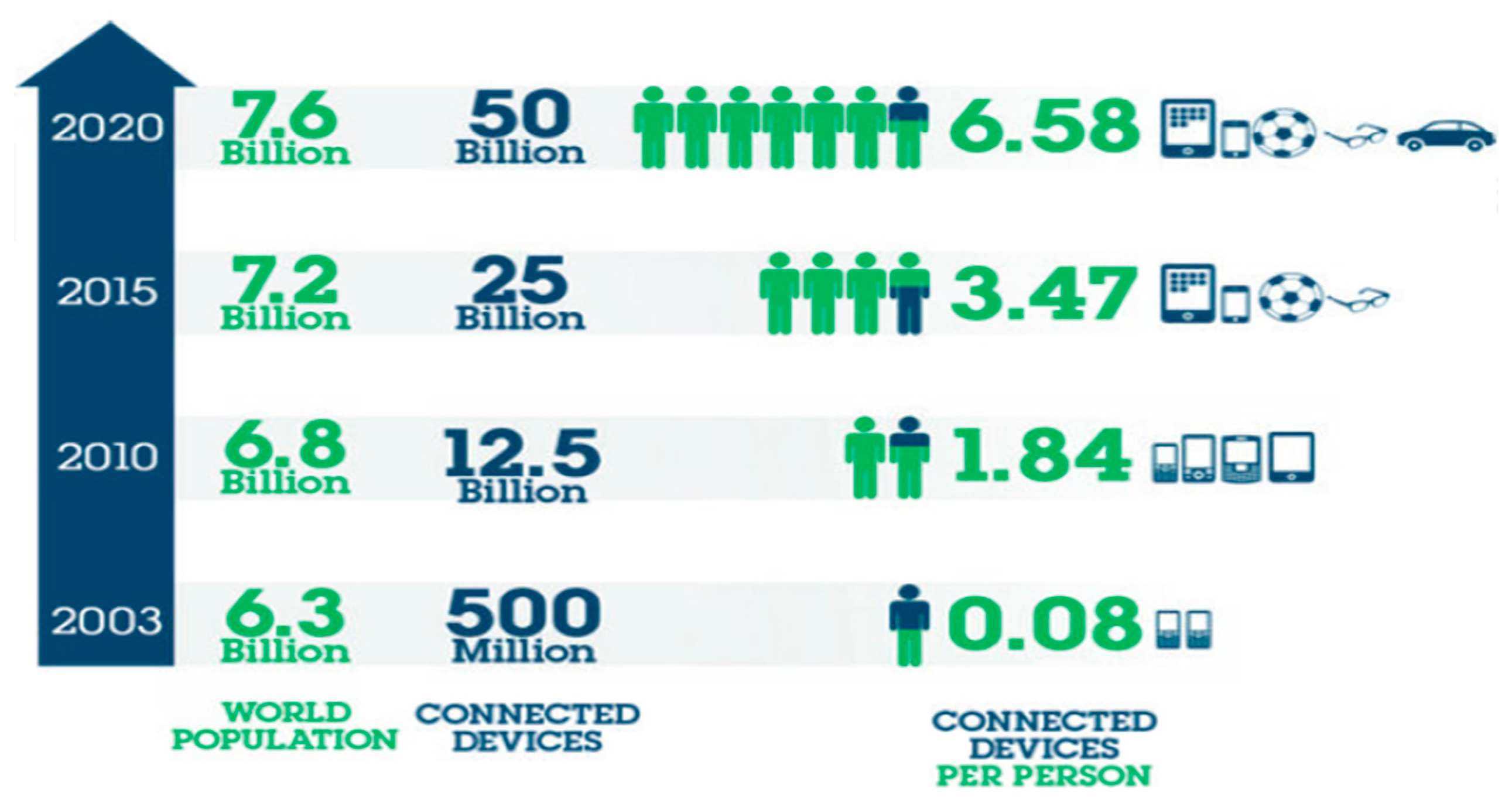
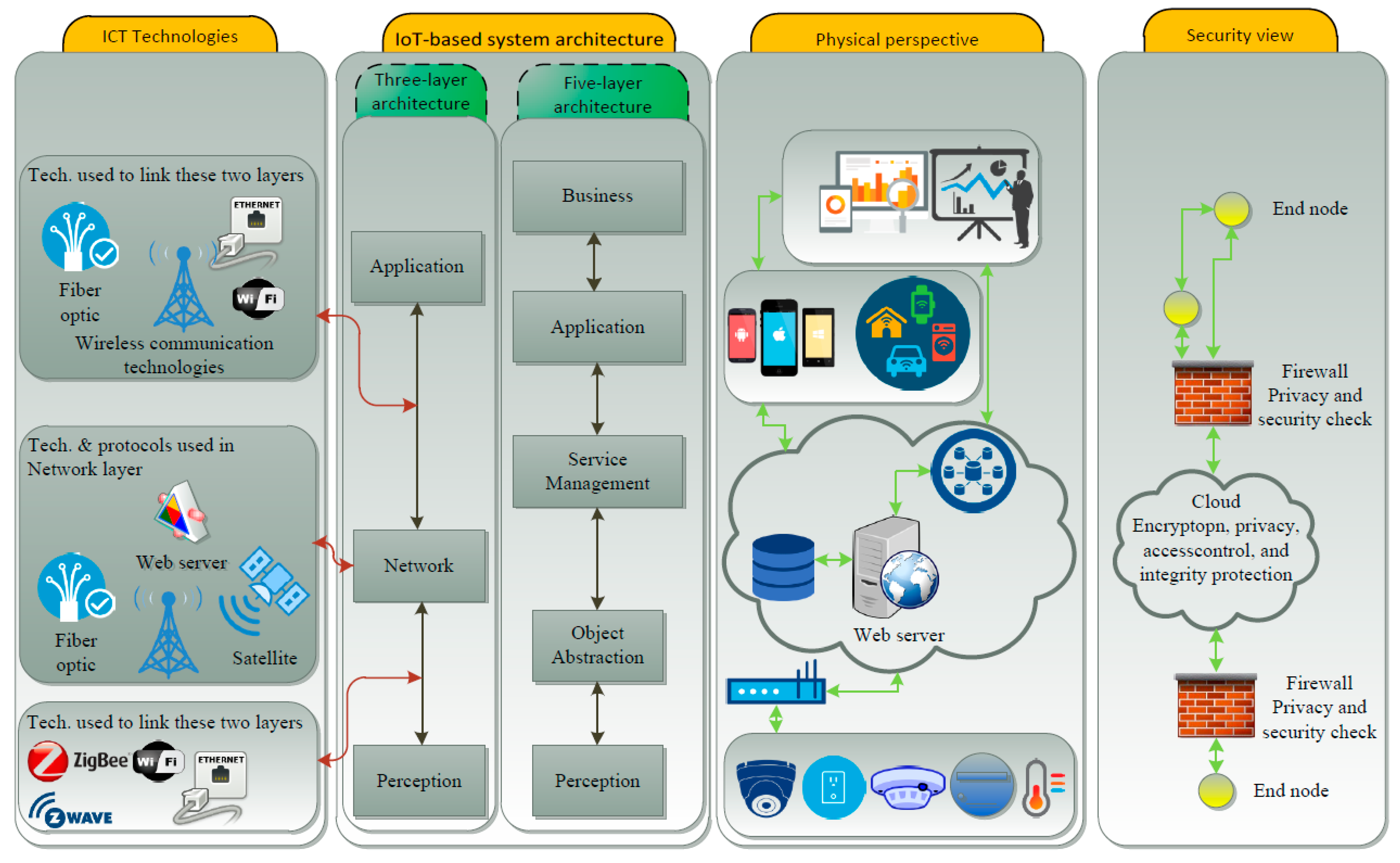
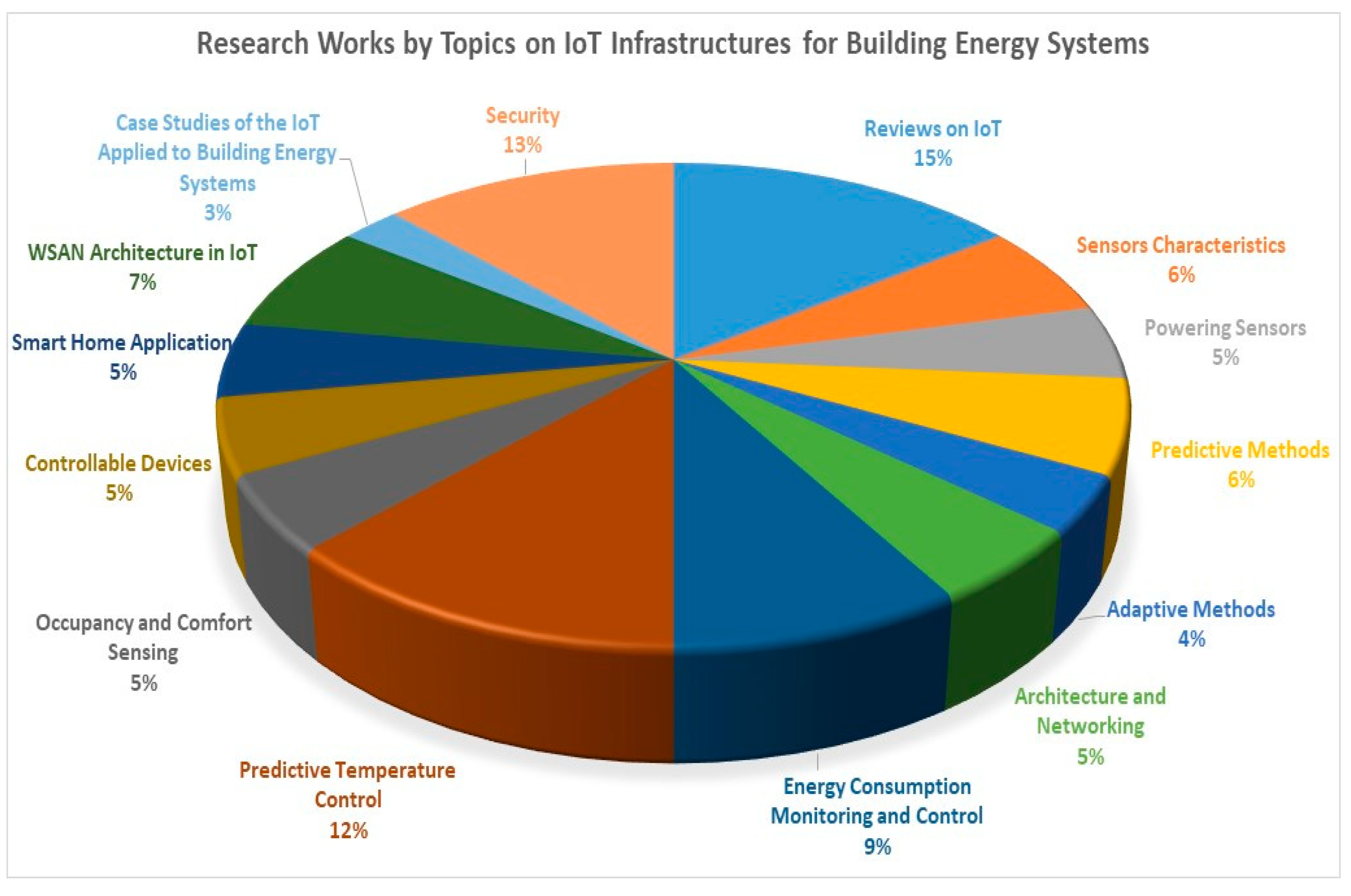
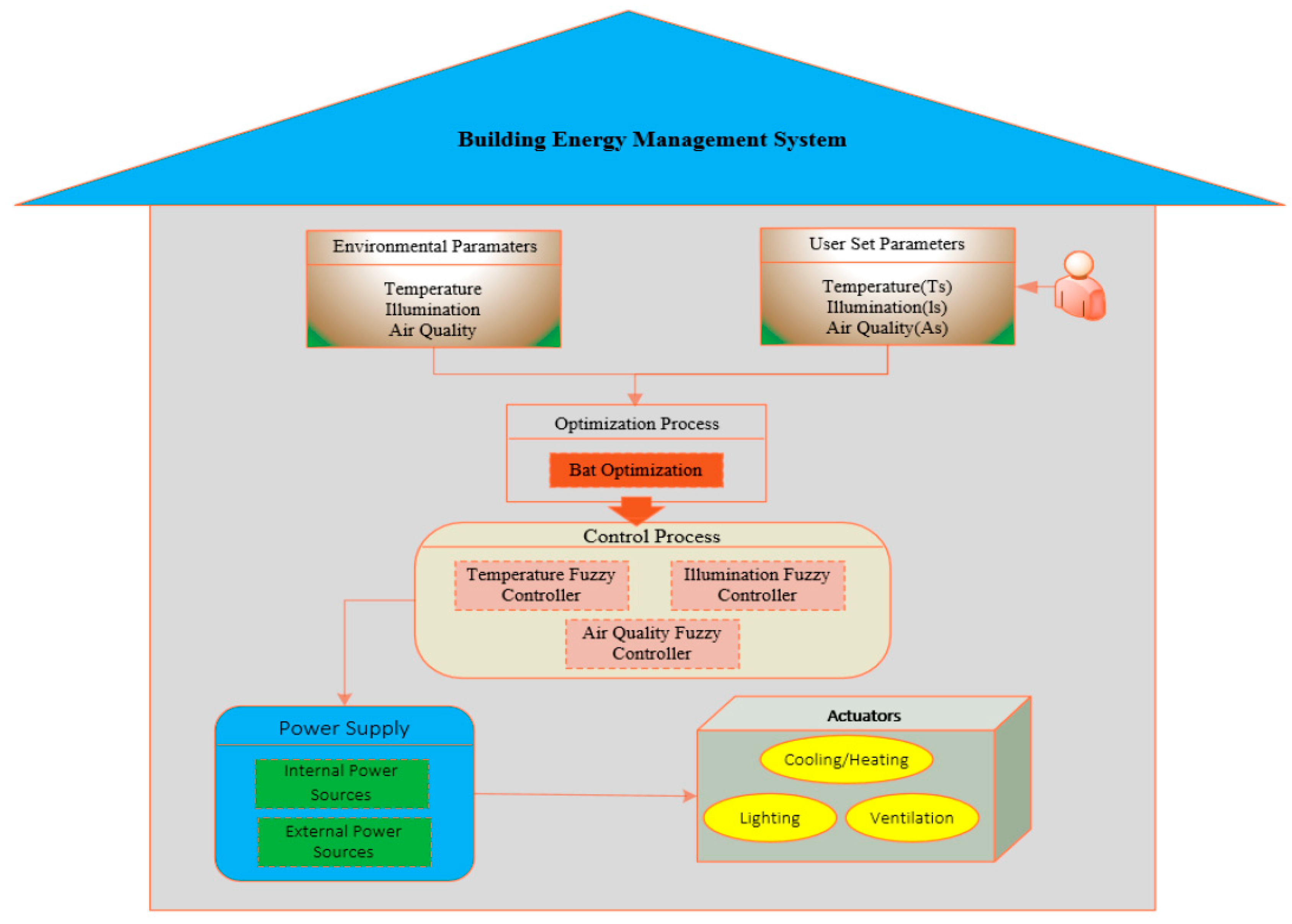

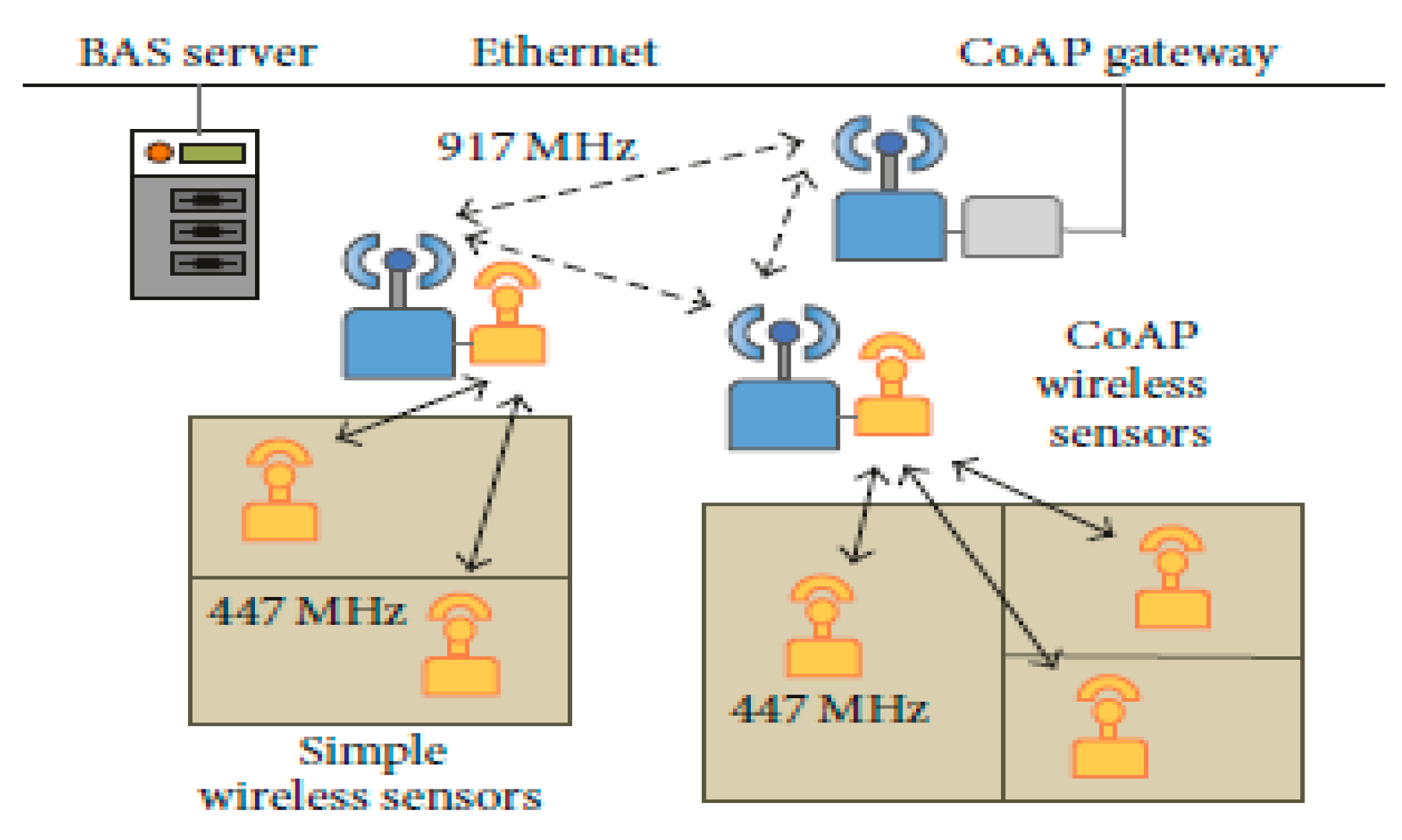




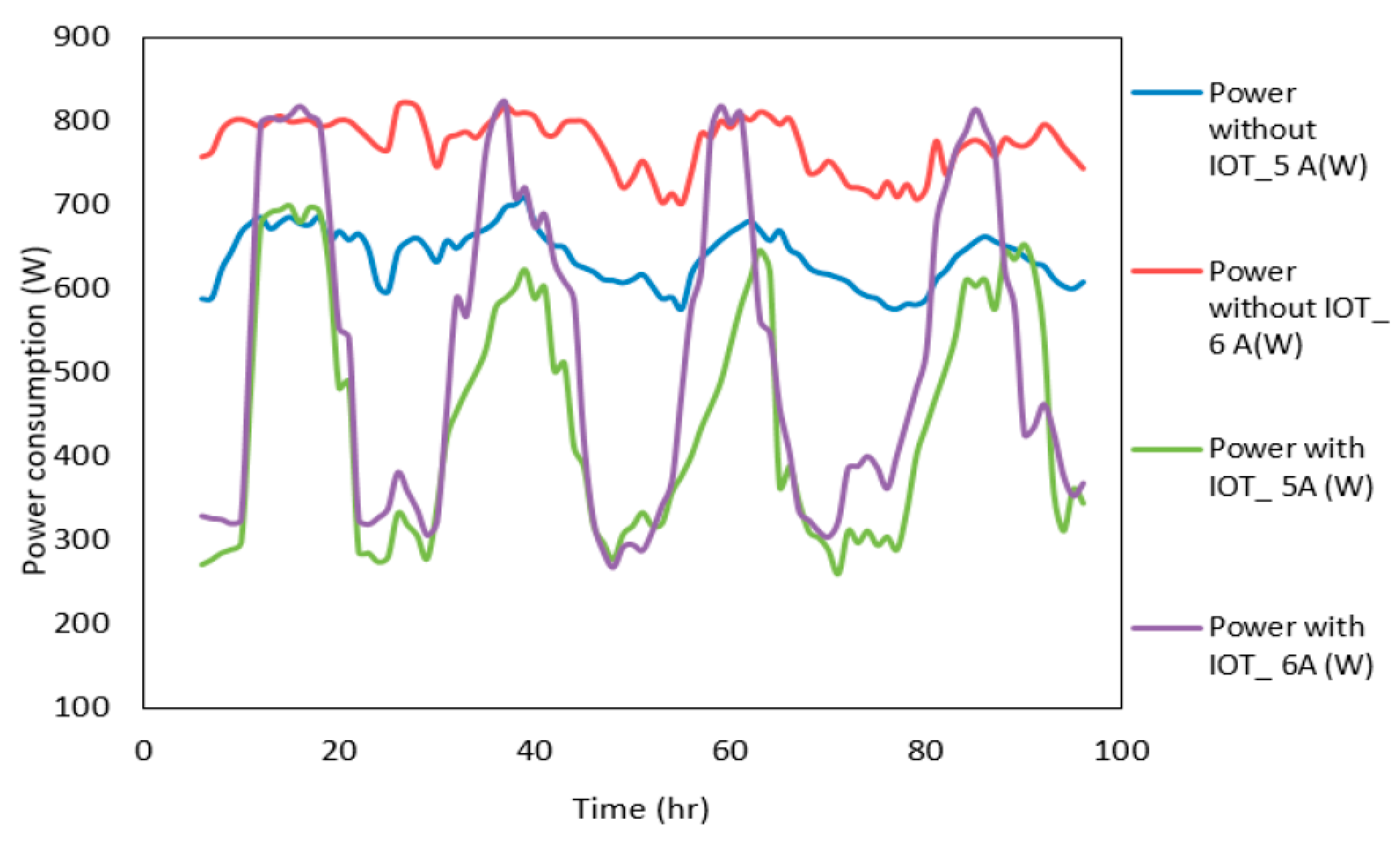
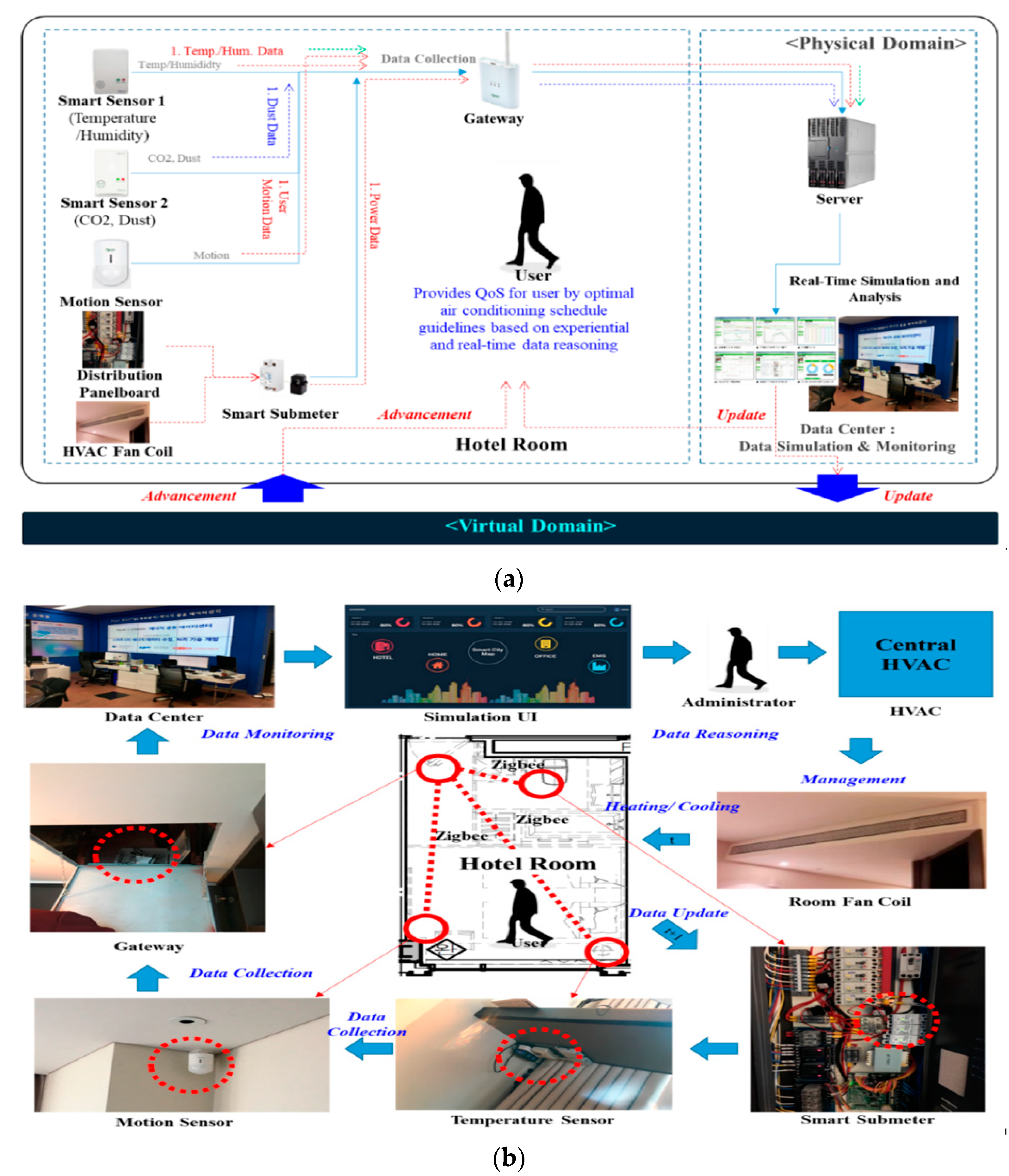
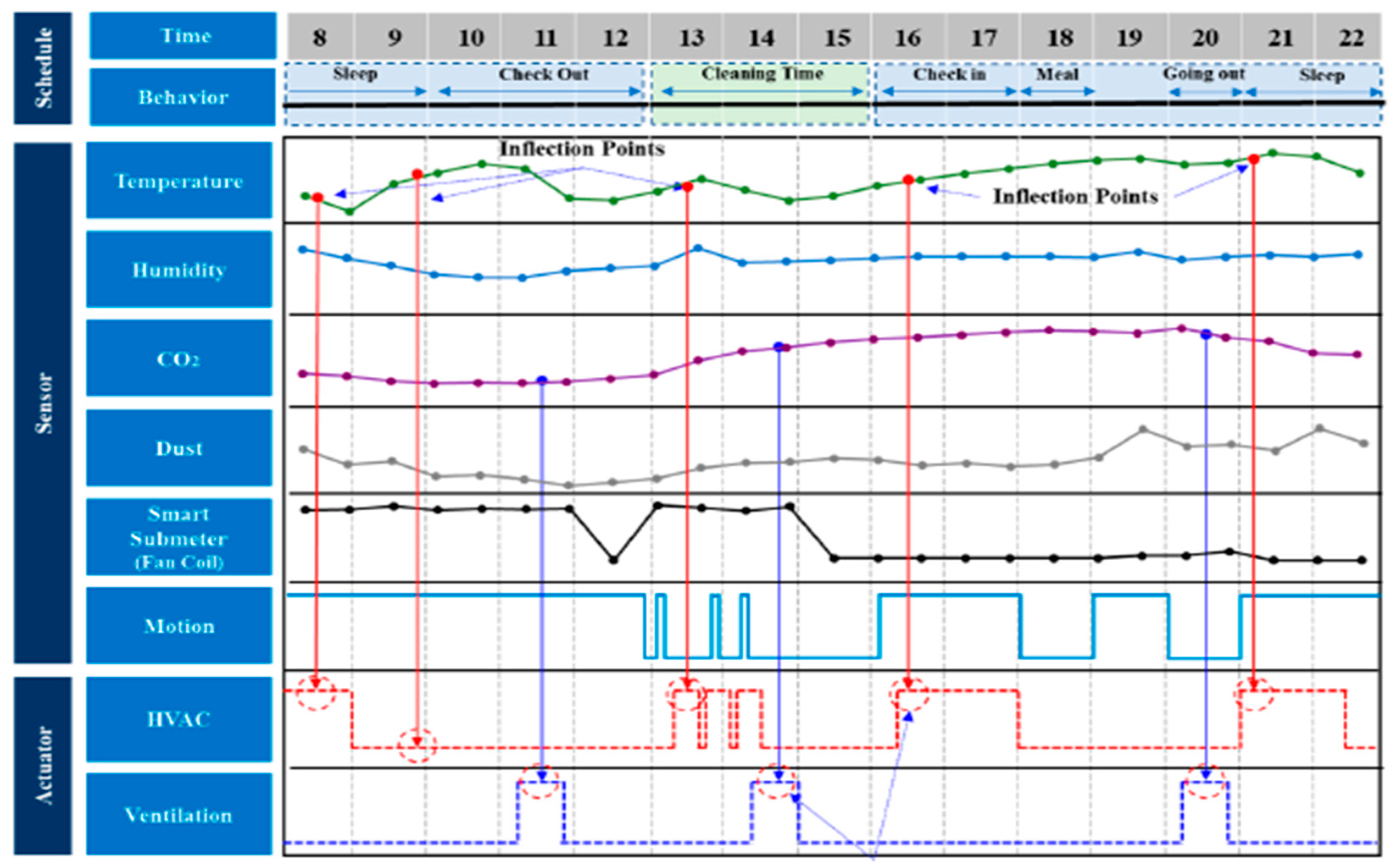

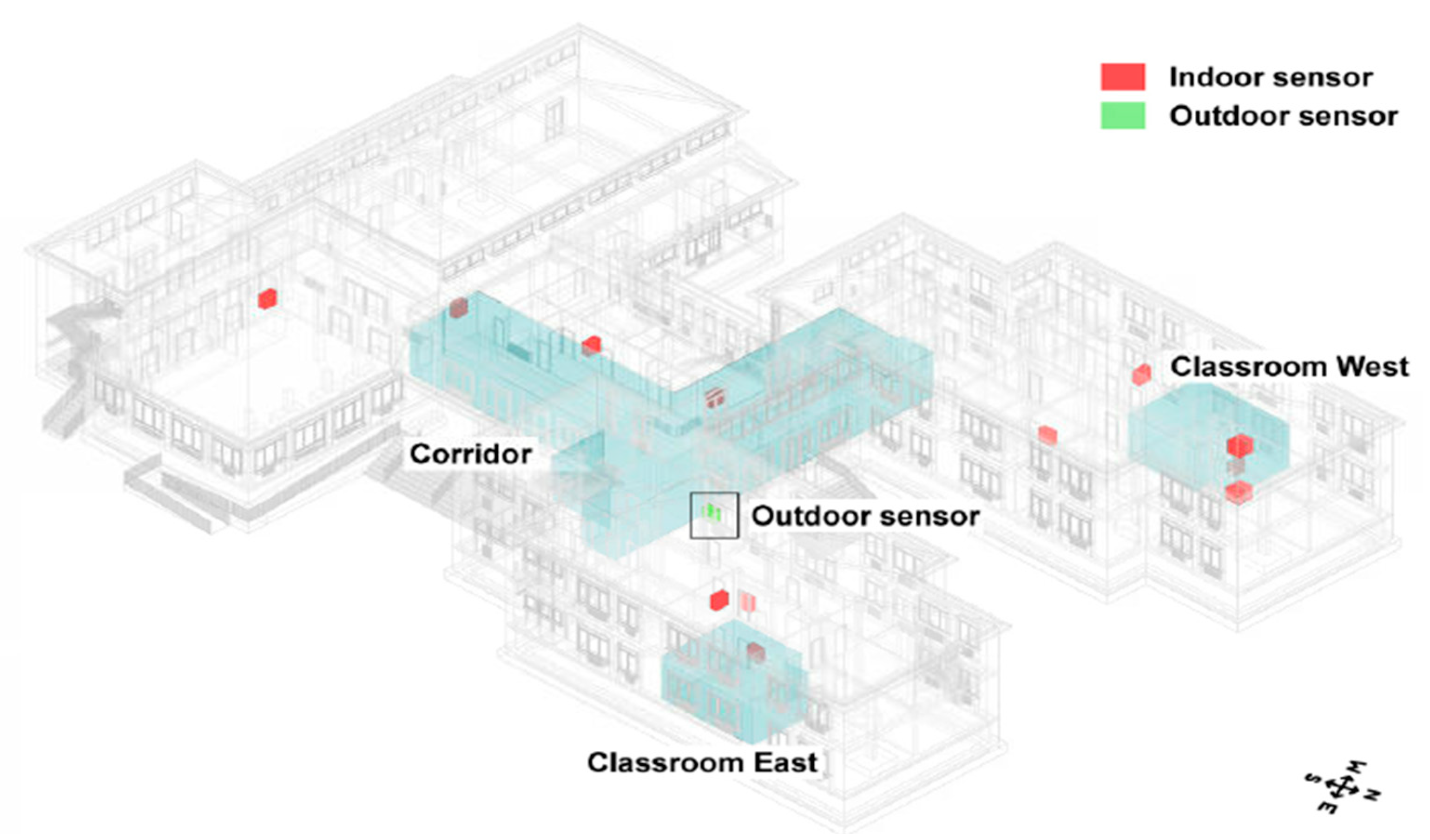


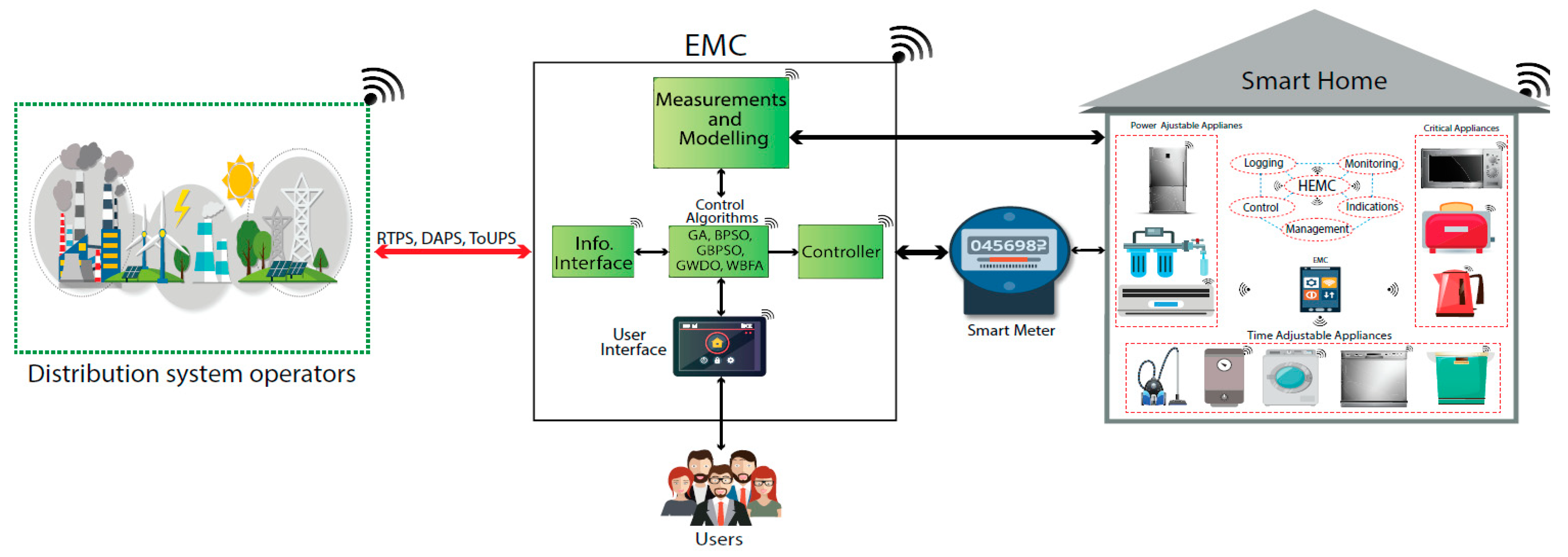

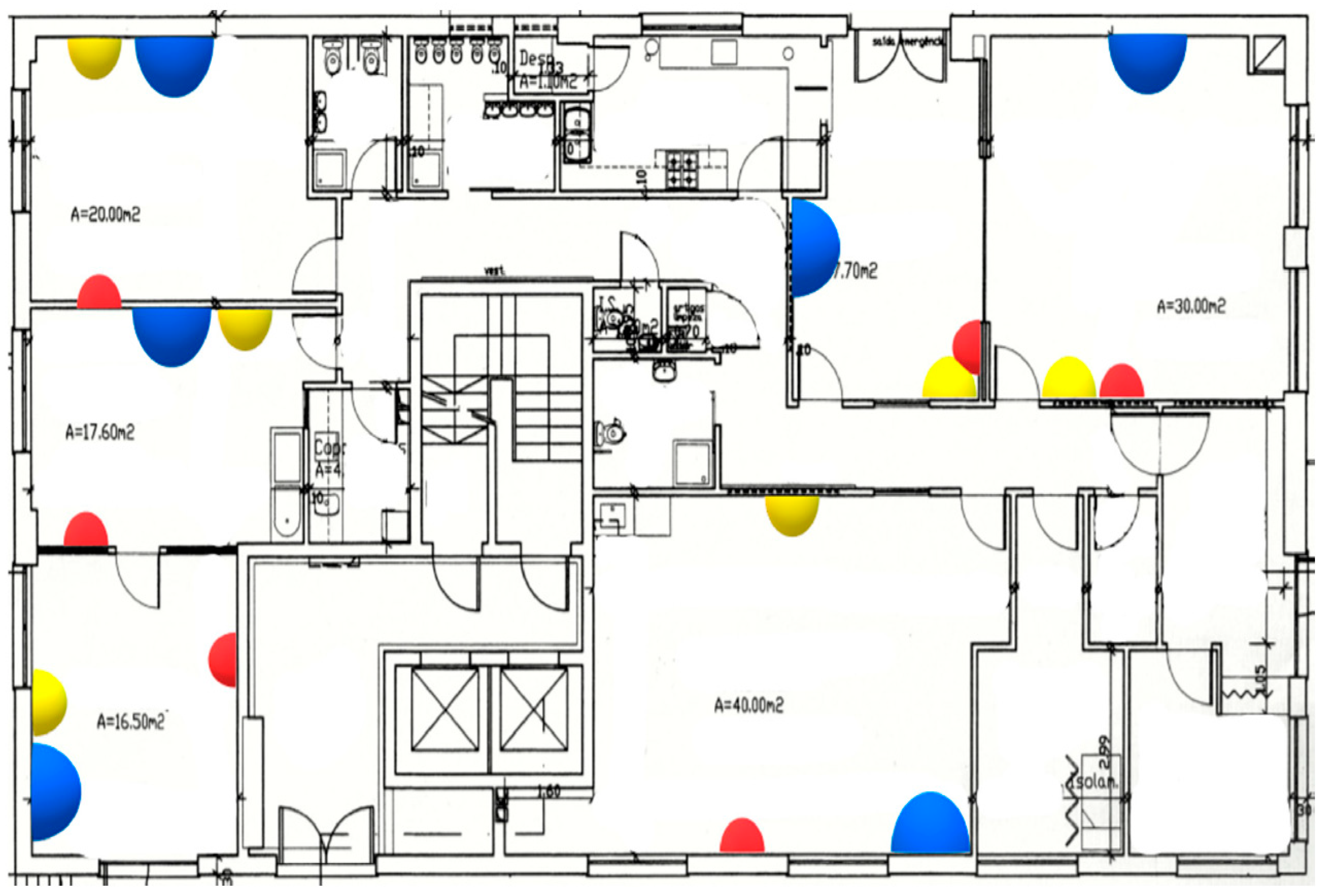
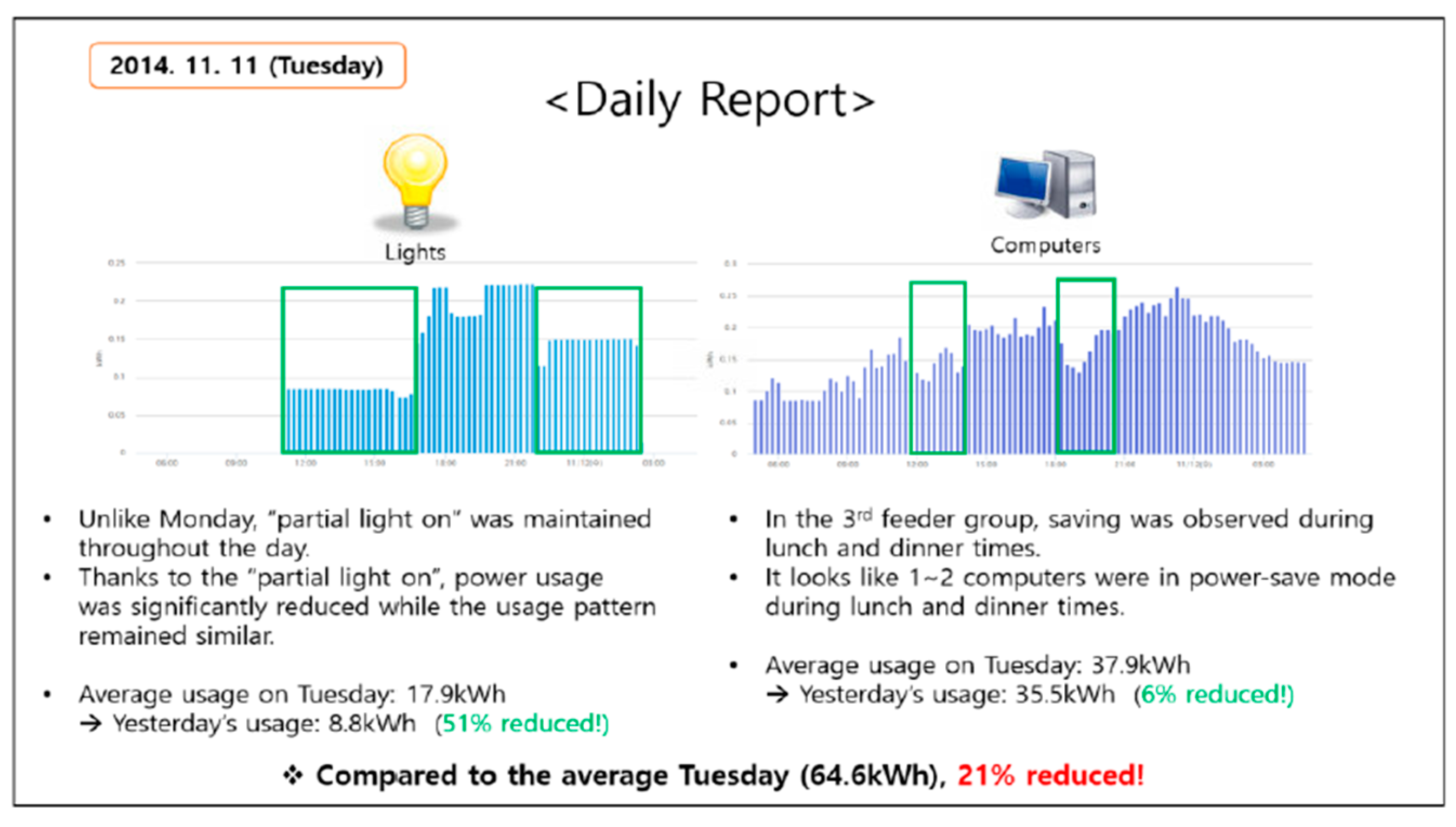
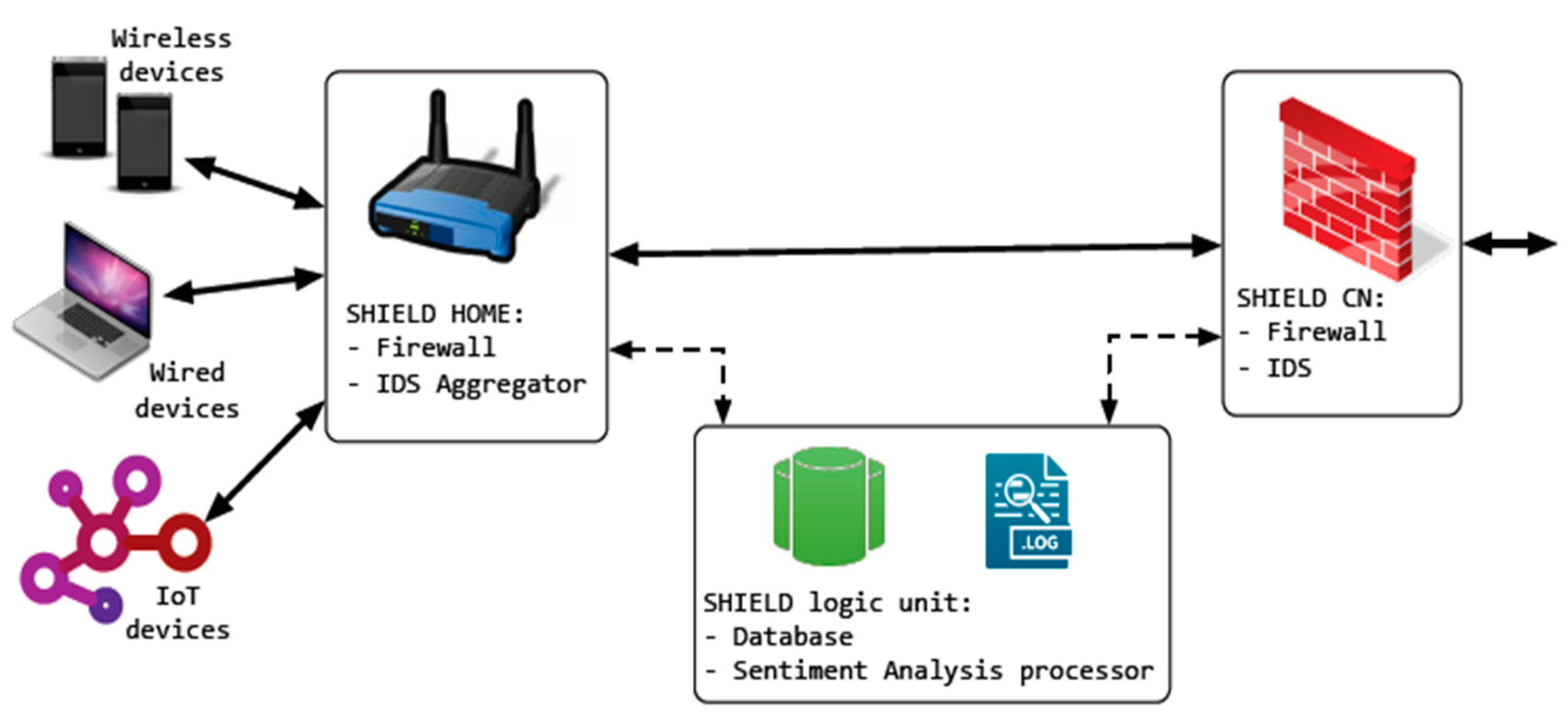
| Authors | Publication Year | Topic | Focus |
|---|---|---|---|
| Ray et al. [7] | 2018 | Review | IoT architectures |
| Shakerighadi et al. [8] | 2018 | Review | IoT for modern energy systems |
| Pan et al. [9] | 2015 | Review | IoT framework for smart energy in buildings |
| Saleem et al. [10] | 2019 | Review | IoT-aided smart grid |
| Ray et al. [11] | 2016 | Review | IoT cloud platforms |
| Talari et al. [12] | 2017 | Review | Smart city-based on the IoT concept |
| Lin et al. [13] | 2017 | Review | IoT architecture, enabling technologies, security and privacy, and applications |
| Srinidhi et al. [14] | 2019 | Review | Network optimizations in the IoT |
| Dachyar et al. [15] | 2019 | Review | Knowledge growth and development in IoT research |
| Ghasempour et al. [16] | 2019 | Review | IoT in smart grid |
| Casini et al. [19] | 2015 | Sensors characteristics | IoT for energy efficiency of buildings |
| Wicaksono et al. [20] | 2012 | Sensors characteristics | Improving energy efficiency in building using ontology and building automation systems |
| Lork et al. [21] | 2019 | Sensors characteristics | An ontology-based framework for building energy management with IoT |
| King and Perry [22] | 2017 | Sensors characteristics Powering sensors | Smart buildings using IoT to save energy in existing buildings |
| Png et al. [23] | 2019 | Sensors characteristics | IoT for smart and scalable heating, ventilation and air conditioning control in commercial buildings |
| Prauzek et al. [24] | 2018 | Powering sensors | Energy harvesting sources, storage devices and system topologies for environmental wireless sensor networks |
| Gawali and Dehmukh [25] | 2019 | Powering sensors | Energy autonomy in IoT technologies |
| Curry and Harris [26] | 2019 | Powering sensors | Powering the environmental IoT |
| Matsui et al. [27] | 2018 | Predictive methods | Real-time sensing in residential area using IoT technology for finding usage patterns to suggest action plan to conserve energy |
| Marinakis et al. [28] | 2017 | Predictive methods | Decision support for intelligent energy management in buildings using the thermal comfort model |
| Mahdavinejad et al. [29] | 2018 | Predictive methods Adaptive methods | Machine learning for IoT data analysis |
| Mataloto et al. [30] | 2019 | Predictive methods | LoBEMS—IoT for building and energy management systems |
| Zou et al. [31] | 2018 | Predictive methods | Occupant activity driven smart buildings using WiFi-enabled IoT devices and deep learning |
| Lachhab et al. [32] | 2018 | Adaptive methods | Ventilation systems control using IoT and big data technologies |
| Fayaz and Kim [33] | 2018 | Adaptive methods | Energy consumption optimisation and user comfort management in residential buildings using a bat algorithm and fuzzy logic |
| Serra et al. [34] | 2014 | Architecture and networking | Smart HVAC control in IoT based on energy consumption minimisation with user comfort constraints |
| Kim et al. [35] | 2017 | Architecture and networking | Implementation of a low-cost energy and environment monitoring system based on a hybrid wireless sensor network |
| Mehta et al. [36] | 2018 | Architecture and networking | IoT applications and challenges |
| Sodhro et al. [37] | 2019 | Architecture and networking | Optimal resource management for IoT based green and sustainable smart cities |
| Pocero et al. [38] | 2019 | Energy consumption monitoring and control | Open source IoT meter devices for smart and energy-efficient school buildings |
| Mudaliar and Sivakumar [39] | 2020 | Energy consumption monitoring and control | IoT based real-time energy monitoring system using Raspberry Pi |
| Mihailescu et al. [40] | 2020 | Energy consumption monitoring and control | End-to-end anytime solution for appliance recognition based on high-resolution current sensing with few-shot learning |
| Santos and Ferreira [41] | 2019 | Energy consumption monitoring and control | IoT power monitoring system for smart environments |
| Hafeez et al. [42] | 2020 | Energy consumption monitoring and control | Efficient energy management of IoT-enabled smart homes under price-based demand response program in smart grid |
| Massano et al. [43] | 2020 | Energy consumption monitoring and control | An online grey-box model based on unscented Kalman filter to predict temperature profiles in smart buildings |
| Dell’Isola et al. [44] | 2019 | Energy consumption monitoring and control | An IoT-integrated tool to enhance user awareness on energy consumption in residential buildings |
| Luo et al. [45] | 2019 | Predictive temperature control | Development of an IoT-based big data platform for day-ahead prediction of building heating and cooling demands |
| Moreno et al. [46] | 2017 | Predictive temperature control | Applicability of big data techniques to smart cities deployments |
| Schmidt et al. [47] | 2017 | Predictive temperature control | Optimising legacy building operation based on the evolution into data-driven predictive cyber-physical systems |
| Al-Ali et al. [48] | 2017 | Predictive temperature control | A smart home energy management system using IoT and big data analytics approach |
| Wang et al. [49] | 2018 | Predictive temperature control | A dependable time series analytic framework for cyber-physical systems of IoT-based smart grid |
| Yassine et al. [50] | 2019 | Predictive temperature control | IoT big data analytics for smart homes with fog and cloud computing |
| Irshad et al. [51] | 2020 | Predictive temperature control | An IoT-based thermoelectric air management framework for smart building applications: A case study for tropical climate |
| Zhao et al. [52] | 2020 | Predictive temperature control | Intelligent thermal comfort controlling system for buildings based on IoT and AI |
| Lee and Yeo [53] | 2020 | Predictive temperature control | Condensation control to cope with occupancy activity and effectively mitigate condensation in unheated spaces by real-time sensor control strategy |
| Park et al. [54] | 2020 | Predictive temperature control | Reinforcement learning-based BEMS architecture for energy usage optimization |
| R. Carli et al. [55] | 2020 | Predictive temperature control | IoT-based architecture for model predictive control of HVAC systems in smart buildings, |
| Aliberti et al. [56] | 2019 | Predictive temperature control | A nonlinear autoregressive model for indoor air temperature predictions in smart buildings |
| Marinakis et al. [28] | 2017 | Occupancy and comfort sensing | Decision support for intelligent energy management in buildings using the thermal comfort model |
| Serra et al. [34] | 2014 | Occupancy and comfort sensing | Smart HVAC control in IoT based on energy consumption minimisation with user comfort constraints |
| Mahbub et al. [5] | 2020 | Controllable devices | IoT-cognizant cloud-assisted energy efficient embedded system for indoor intelligent lighting, air quality monitoring and ventilation |
| King and Perry [22] | 2017 | Controllable devices | Smart buildings using IoT to save energy in existing buildings |
| Hafeez et al. [42] | 2020 | Smart home application | Efficient energy management of IoT-enabled smart homes under price-based demand response program in smart grid |
| Tomat et al. [57] | 2020 | Occupancy and comfort sensing | Thermal comfort under the IoT Paradigm related to crowdsensing |
| Vanus et al. [58] | 2019 | Occupancy and comfort sensing | Prediction of CO2 course and occupancy recognition in intelligent buildings using IoT |
| Domb [59] | 2019 | Controllable devicesSmart home application | Smart home systems based on IoT |
| Rinaldi et al. [60] | 2020 | Controllable devices | A cognitive-driven building renovation for improving energy efficiency |
| Zigbee Alliance [61] | 2020 | Controllable devices | Project connected home over IP |
| Vanelli et al. [62] | 2017 | IoT data storage | IoT data storage infrastructure in the cloud using NoSQL databases |
| Chilipirea et al. [63] | 2016 | Smart home application | Smart home security system using IoT |
| Filho et al. [64] | 2019 | Smart home application WSAN in IoT | Energy-efficient smart home systems using IoT |
| Akyildiz et al. [65] | 2010 | WSAN in IoT | Wireless sensor networks |
| Chen et al. [66] | 2010 | WSAN in IoT | Distributed collaborative control for industrial automation with wireless sensor and actuator networks |
| Salarian et al. [67] | 2012 | WSAN in IoT | Coordination in wireless sensor-actuator networks |
| Villas et al. [68] | 2013 | WSAN in IoT | An energy-aware spatio-temporal correlation mechanism to perform efficient data collection in wireless sensor networks |
| Llaria et al. [69] | 2016 | WSAN in IoT | Application of wireless sensor and actuator networks to achieve intelligent microgrids: a promising approach towards a global smart grid deployment |
| Mocrii et al. [70] | 2018 | Smart home | IoT-based smart homes review |
| Mataloto et al. [30] | 2019 | Case studies of the IoT applied to building energy systems | LoBEMS—IoT for a kindergarten building and energy management systems |
| Han et al. [71] | 2018 | Case studies of the IoT applied to building energy systems | A case study in a university building for improving the energy saving process with high-resolution data and IoT |
| Brun et al. [72] | 2018 | Security | Deep learning with dense random neural network for detecting attacks against IoT-connected home environments |
| Andaloussi et al. [73] | 2018 | Security | Access control in IoT environment |
| Alkhalil and Ramadan [74] | 2017 | Security | IoT data provenance implementation challenges |
| Han et al. [75] | 2019 | Security | A novel architecture of air pollution measurement platform using 5G and blockchain for IoT applications |
| Dasgupta et al. [76] | 2019 | Security | Privacy of IoT-enabled smart home systems |
| Hasan et al. [77] | 2019 | Security | Attack and anomaly detection in IoT sensors in IoT sites using machine learning approaches |
| Casola et al. [78] | 2019 | Security | A security monitoring system for IoT |
| HaddadPajouh et al. [79] | 2019 | Security | IoT security |
| Mbarek and Pitner [80] | 2018 | Security | An efficient mutual authentication scheme for IoT |
| Pecorella et al. [81] | 2018 | Security | “Network Sentiment” framework to improve security and privacy for smart home |
| System | Technology | Energy Reductions |
|---|---|---|
| Analytics | Cloud-based energy information system | 5–10% whole building |
| Building automation | Building automation System | 10–25% whole building |
| Lighting | Advanced lighting controls | 45% |
| Lighting | Web-based lighting management system | 20–30% over controls reductions |
| Window shading | Automated shade system | 21–38% |
| Window shading | Smart glass | 20–30% |
| Window shading | Switchable film | 32–43% |
| Harvester | Power Output | Harvester | Power Output |
|---|---|---|---|
| Photovoltaic (Outdoor) | 50 mW·cm−2 | Air movement | 6 W·cm−2 |
| Photovoltaic (Indoor) | 50 μW·cm−2 | Pressure variation | 15 μW·cm−2 |
| Photosynthesis (Lab) | 10–40 μW·cm−2 | Piezoelectrics | 12.5 μW·cm−2 |
| Thermoelectrics | 20 μW·cm−2 | Triboeletrics | 3 mW·cm−2 |
| Pyroelectrics | 8.64 μW·cm−2 | Electrostatics | 12 mW·cm−2 |
| Microbial | 3–700 μW·cm−2 | Radio frequency | 10.3 μW·cm−2 |
| Chemical potential | 3 mW | Induction | 70+ μW·cm−2 |
| Wireless Technology | Data Rate | Max Charge Length | Communication Range | Security | Advantages |
|---|---|---|---|---|---|
| Bluetooth 5 | 125 kb/s (Long range S = 7) 2 Mb/s–500 kb/s (Long range S = 2) | 255 Bytes | Up to 200 m +200 m (BLE) | L1–No security L2–AES 128 L3–AES and Pairing L4–ECDHE | Simple hardware; Easy access and operation; secure; low power consumption (BLE) |
| LoRaWAN | 50 kb/s | 243 Bytes | ~5 km urban ~15 km–20 km rural | t AES | Availability; long communication range; secure; low power consumption; low cost |
| NB-IoT | 200 kb/s | 1600 Bytes | ~1 km urban ~10 km rural | LTE encryption | wide maximum load length (4G coverage); secure |
| Sigfox | 100 kb/s | 12 Bytes | ~10 km urban ~40 km rural | No Encryption or Adaptable for each case | Long communication range; low power consumption |
| Wi-Fi | Top 1 Gb/s IEEE 802.11ac | 2034 bytes | 1–100 m | WPA/WPA2 | Advanced standard; high speed |
| ZigBee | 20 kb/s @ 868 MHz 40 kb/s @ 915 MHz 250 kb/s @ 2.4 Ghz | 255 Bytes | 10–300 m Direct Line Sight 75–100 m Indoor | 128 bit AES | Large number of nodes; low power consumption; low cost; secure |
| Z-Wave | 100 kb/s | 64 Bytes | ~100 m (may vary depending on the number of nodes) (up to 4 hops) | Security 2 (S2) (Include AES-128, ECDHE, secure TLS tunnel) | Simple installation; Interoperability between devices of different manufacturers; low power consumption; secure |
Publisher’s Note: MDPI stays neutral with regard to jurisdictional claims in published maps and institutional affiliations. |
© 2021 by the authors. Licensee MDPI, Basel, Switzerland. This article is an open access article distributed under the terms and conditions of the Creative Commons Attribution (CC BY) license (http://creativecommons.org/licenses/by/4.0/).
Share and Cite
Yaïci, W.; Krishnamurthy, K.; Entchev, E.; Longo, M. Recent Advances in Internet of Things (IoT) Infrastructures for Building Energy Systems: A Review. Sensors 2021, 21, 2152. https://doi.org/10.3390/s21062152
Yaïci W, Krishnamurthy K, Entchev E, Longo M. Recent Advances in Internet of Things (IoT) Infrastructures for Building Energy Systems: A Review. Sensors. 2021; 21(6):2152. https://doi.org/10.3390/s21062152
Chicago/Turabian StyleYaïci, Wahiba, Karthik Krishnamurthy, Evgueniy Entchev, and Michela Longo. 2021. "Recent Advances in Internet of Things (IoT) Infrastructures for Building Energy Systems: A Review" Sensors 21, no. 6: 2152. https://doi.org/10.3390/s21062152
APA StyleYaïci, W., Krishnamurthy, K., Entchev, E., & Longo, M. (2021). Recent Advances in Internet of Things (IoT) Infrastructures for Building Energy Systems: A Review. Sensors, 21(6), 2152. https://doi.org/10.3390/s21062152









